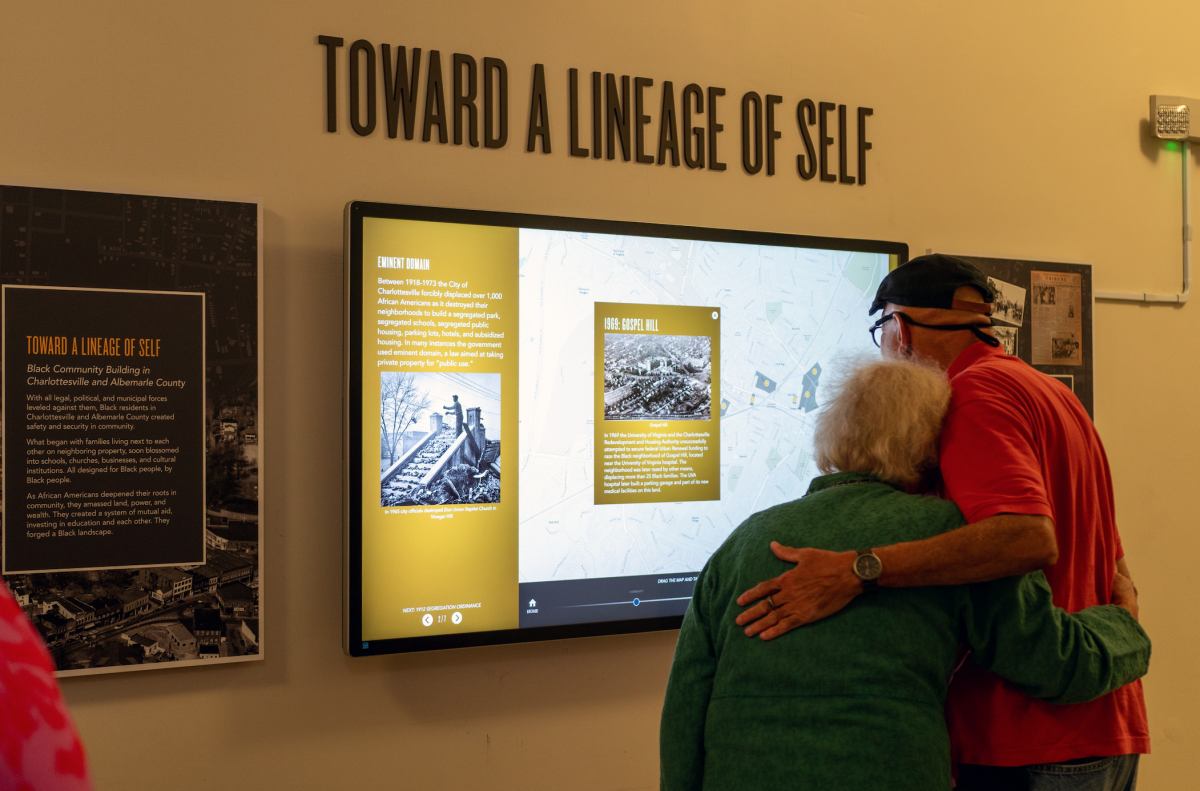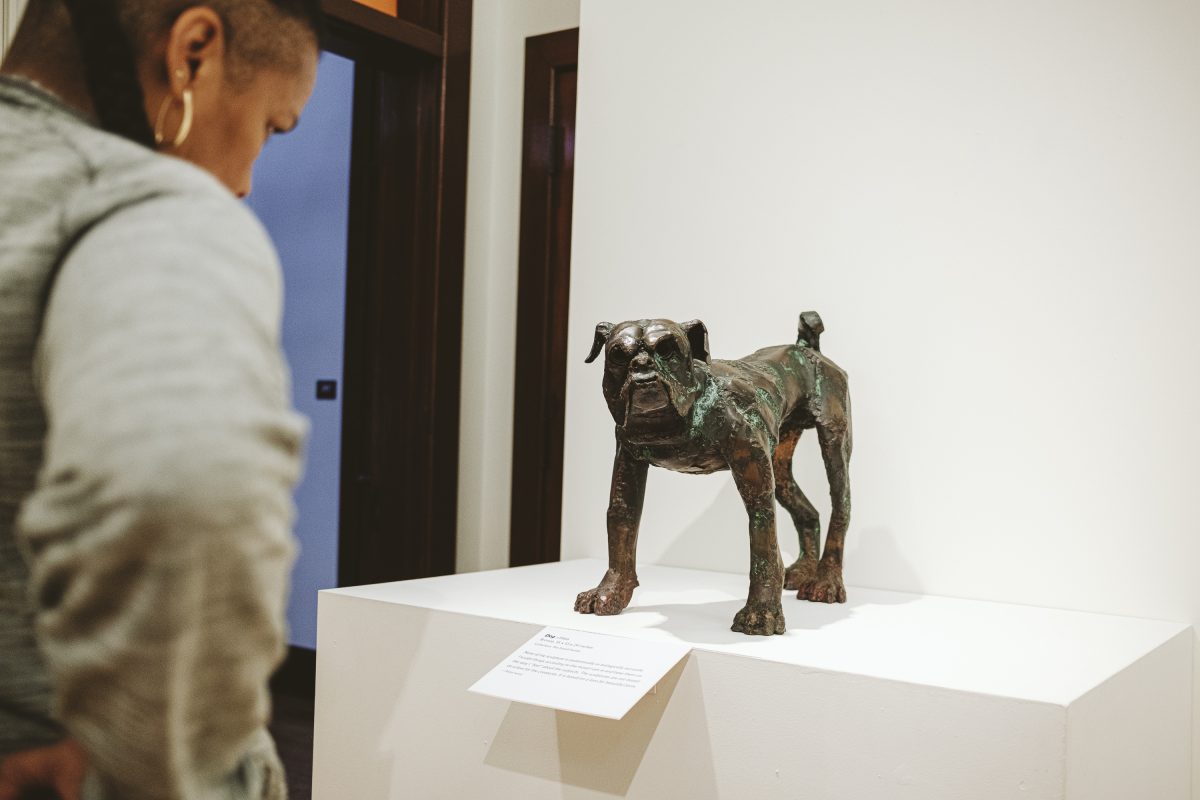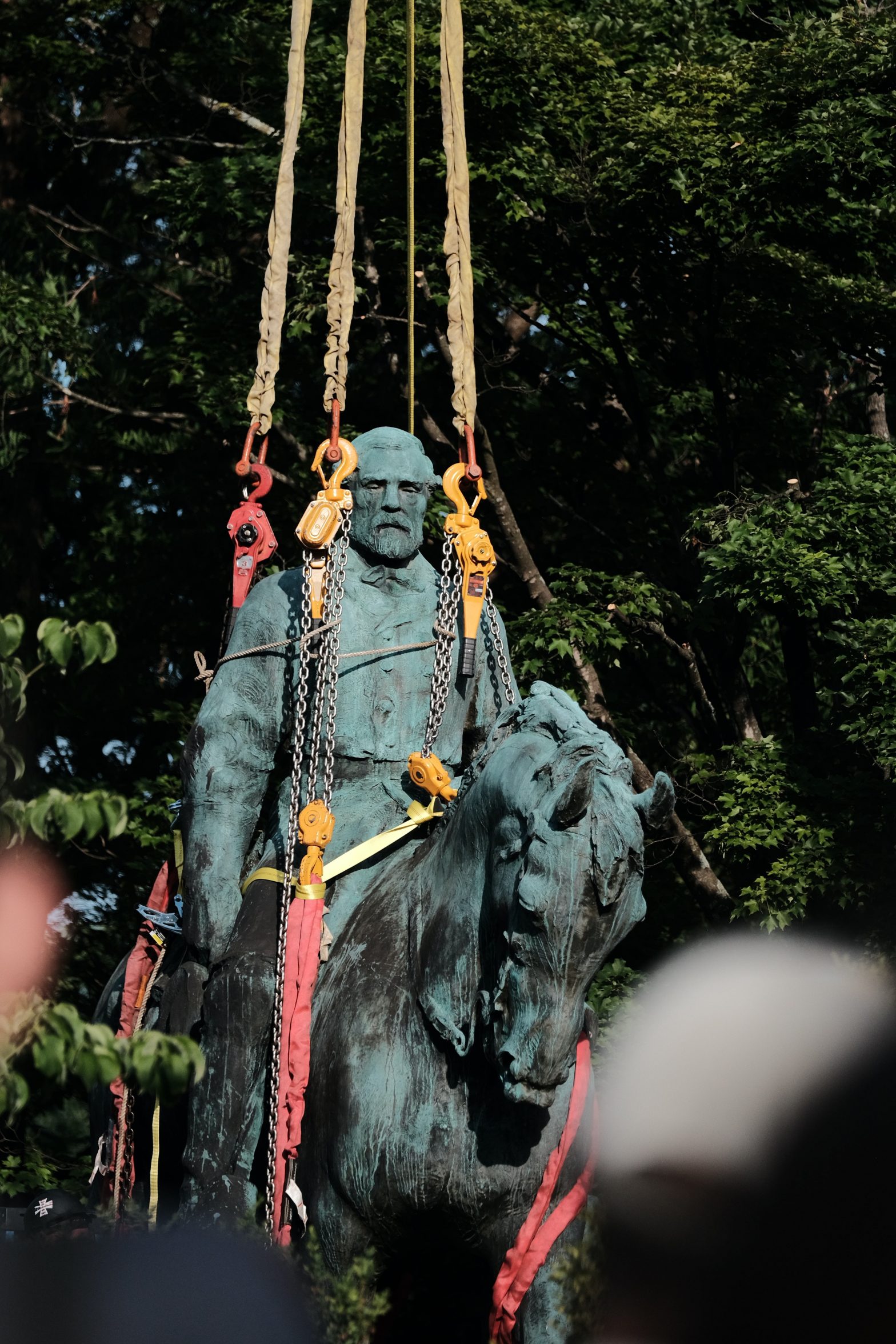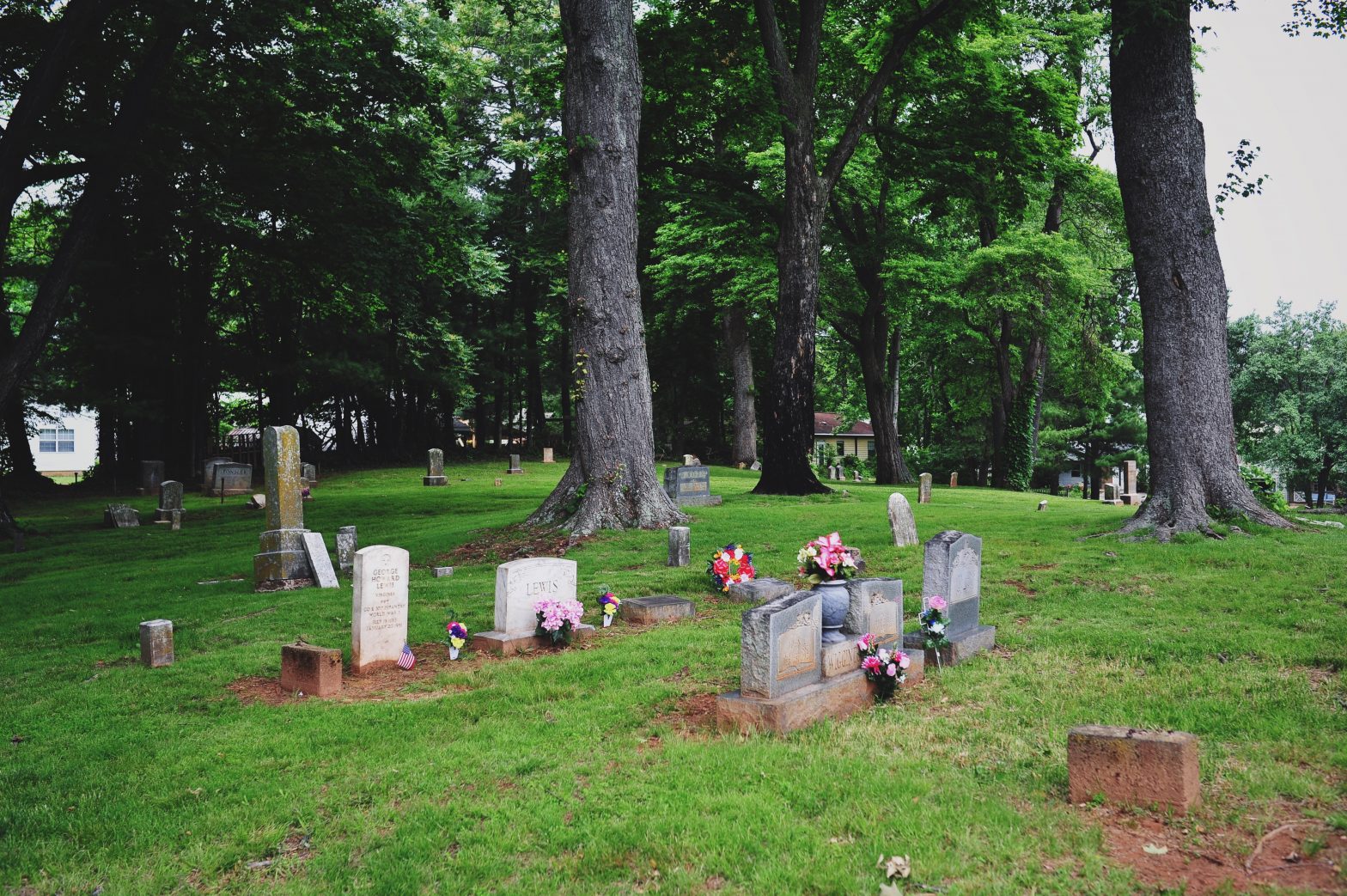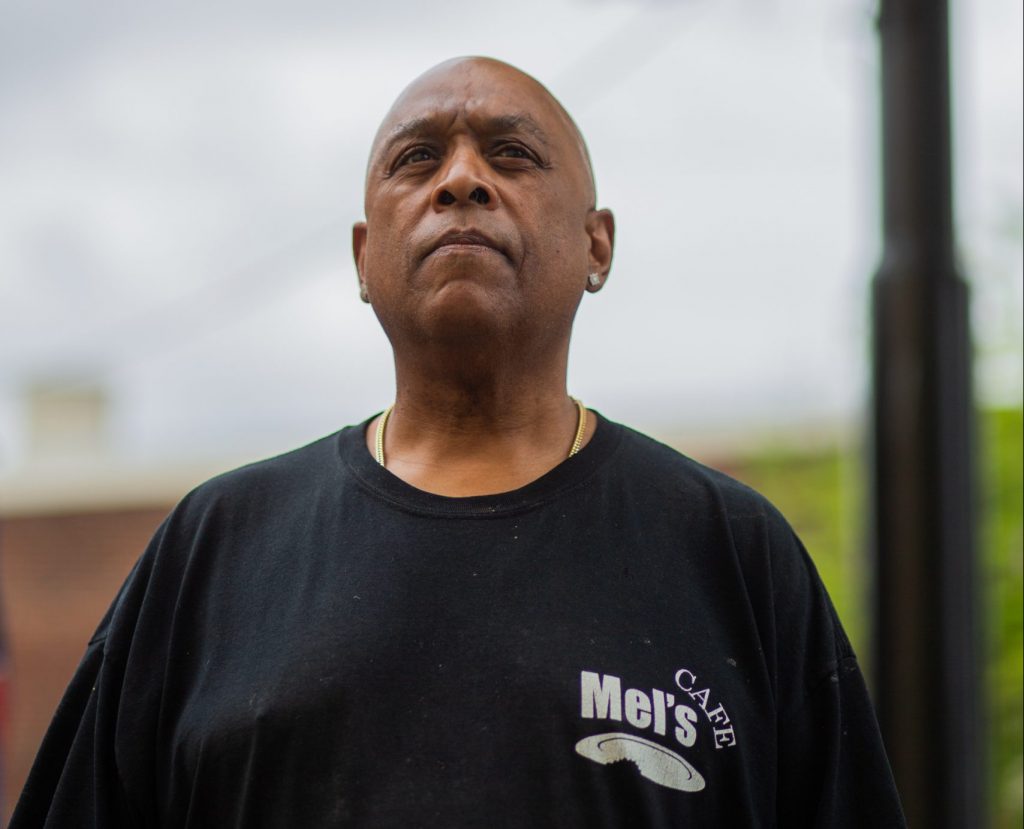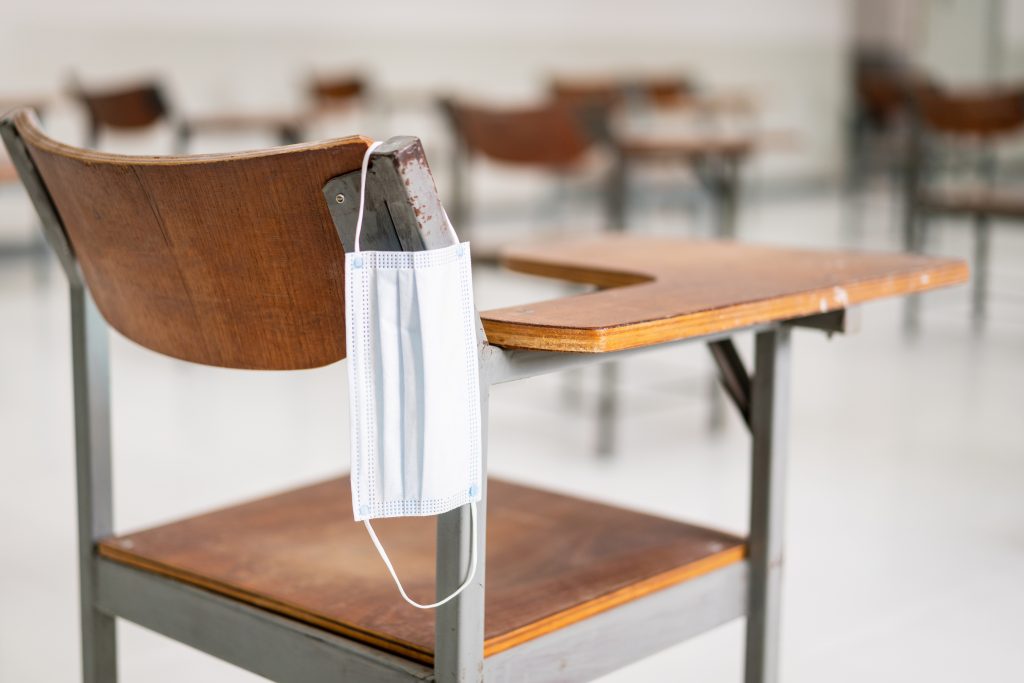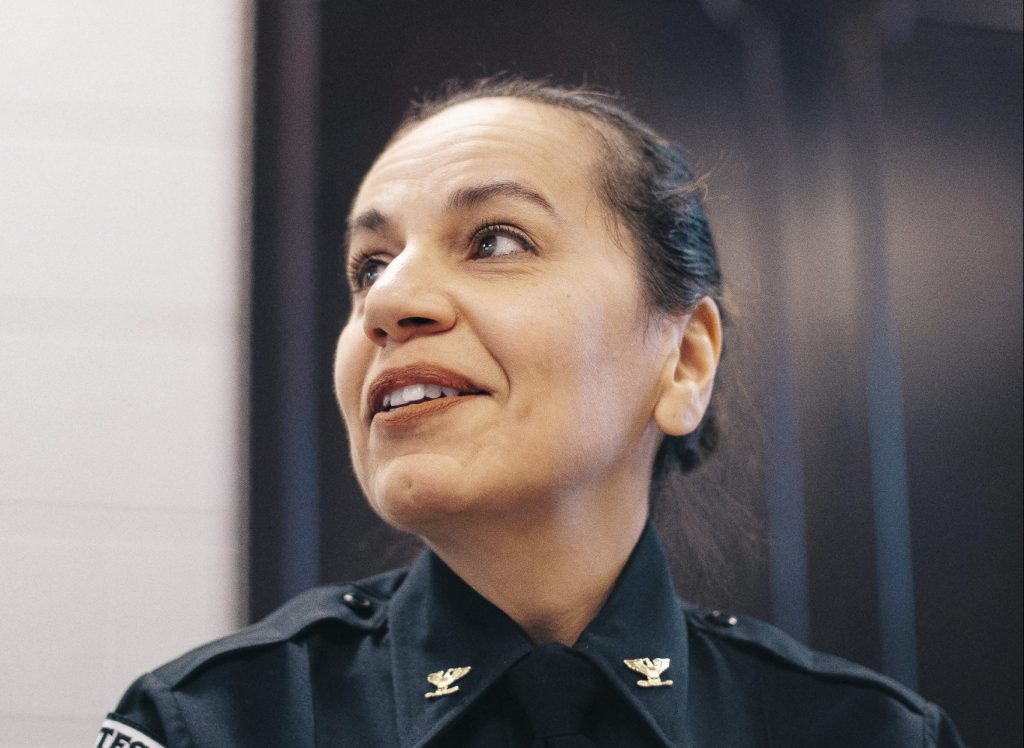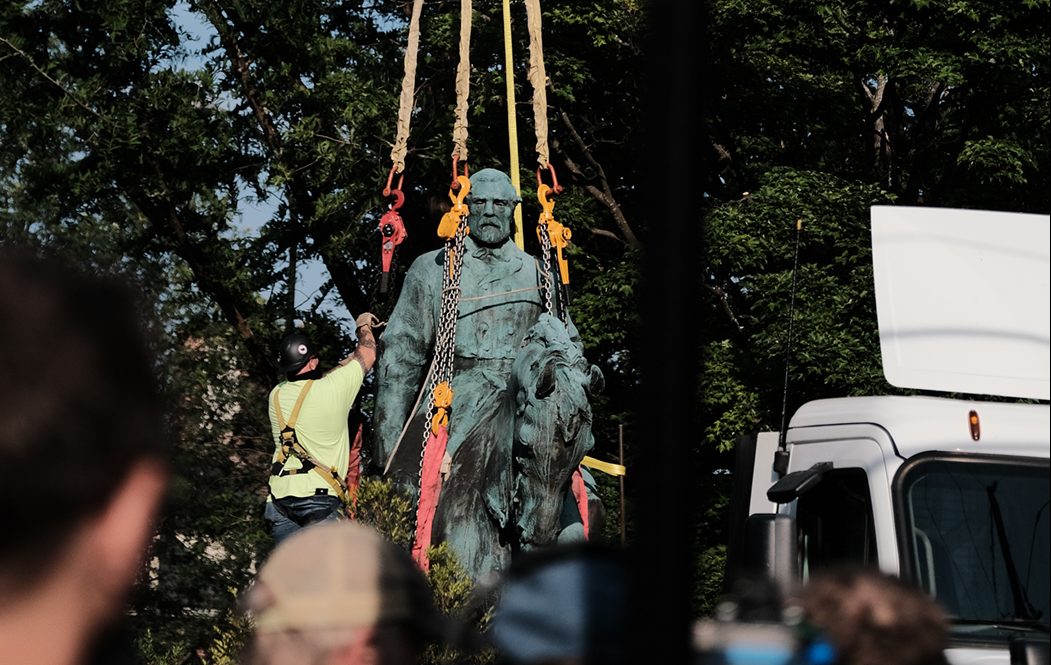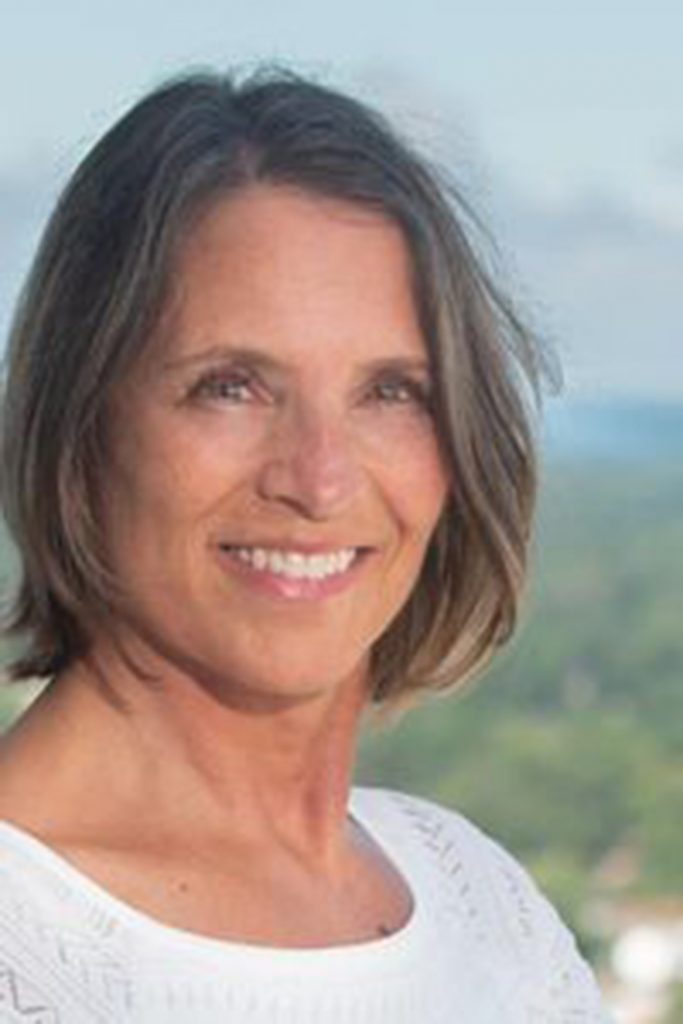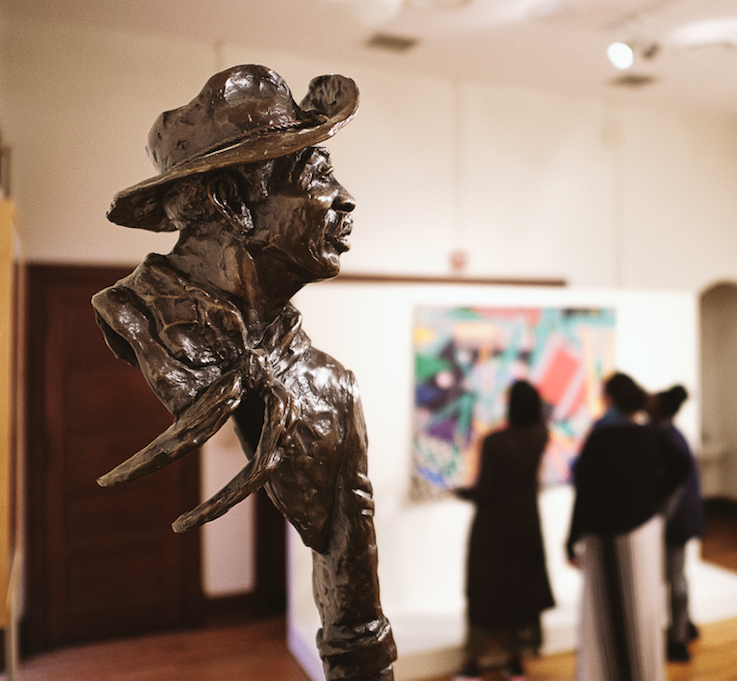“Toward a Lineage of Self” is the latest addition to the “Pride Overcomes Prejudice” permanent exhibition at the Jefferson School African American Heritage Center. Featuring an interactive digital map, the exhibition uses deed records, oral histories, documents, and photographs to show how Charlottesville’s historically Black neighborhoods came to be, the struggles they faced when confronted with racist civic policy, and the community’s response.
With photographs and descriptions, the map breathes life into the past, enlivening the facts it lays bare. The map has three categories: community, civil rights, and discrimination—and what emerges is a picture of a vibrant, well-organized, and prosperous community that supported its members, and when discriminatory practices were introduced, joined the fight for civil rights.
“They structured their lives within this space of legalized apartheid. There’s no other way to describe it,” says JSAAHC Executive Director Dr. Andrea Douglas. “It says in the minutes of the City of Charlottesville … ‘This will accomplish racial segregation in our city.’ You can’t get past those documents and those are the things that are important as we start to think about what is equitable.”
“The minute that African American people leave enslavement, they begin to shape Charlottesville,” says Douglas. “They begin to purchase property, they begin to create their home places, and they begin to build around those places the ancillary needs—the grocery store, churches, and community aid societies … and they’re doing it in the built landscape and they’re doing it at a rapid rate, facilitating this ascendancy for each other—that is what ‘Toward a Lineage of Self’ really articulates.”
One example is John West, a successful barber and the first Black man elected to Charlottesville’s Town Council. He was responsible for more than 600 property transactions between 1870 and 1927. As a landlord, he offered reasonable rates and made home-buying possible for many African Americans.
Similarly, the Piedmont Industrial Land Improvement Company was formed by nine residents, who pooled funds to buy more than 50 properties in its 26-year history, providing both affordable housing and economic returns to its investors. And the fact that Charlottesville’s Black community managed to build seven churches between 1864 and 1919 is a testament not just to its faith, but also to its prosperity.
“The whole of Charlottesville’s center was Black-owned,” says JSAAHC Director of Digital Humanities Jordy Yager. ”This had never been articulated before. We talked about all these different neighborhood pockets like Vinegar Hill, Fifeville, etc., but once you look at it in its entirety, you really start to see how large the center of Charlottesville is as a Black space.” The area totaled some 800 acres.
Yager, a journalist and Charlottesville native who’s written about Vinegar Hill and the gentrification of the 10th and Page neighborhood for this publication, has accumulated hours of taped recollections for C-VILLE Weekly stories, which he offered to JSAAHC for its oral histories archive. Out of this came an initiative, supported by a grant from the Virginia Foundation for the Humanities, to collect interviews about what it was like growing up Black in Charlottesville.
An offshoot of this, Mapping Cville, began around the same time as the Unite the Right rally in August 2017. “After that we had a reckoning in Charlottesville in terms of [the city’s] history,” says Yager. “It was then we realized, we really didn’t know that history. We knew that racist housing policies were enacted, but we didn’t know where and we didn’t know how.”
Armed with a Charlottesville Area Community Foundation grant and with the cooperation of city and county clerks, JSAAHC digitized an astounding 300,000 pages of property records. Then, using optical character recognition software, the racial covenants were extracted.
More than 2,000 community members helped log the information to create what Yager says is “The first complete database of every single racially restricted property in Charlottesville that’s ever existed.”
“Toward a Lineage of Self” spells out the retaliatory discriminatory practices—land seizures, racial covenants on deeds, intentional lack of city services, like water and sewage, that were instituted by local and state governments alarmed or offended by the progress—their affluence and their successful voter campaigns, which, among other things, helped elect James T.S. Taylor to the Constitutional Convention of 1868—made by Black residents.
The uncomfortable truths revealed by the research must be dealt with. These truths are not lodged in the distant remove of ancient history; you only have to look around Charlottesville to see the fallout of this civic-endorsed inequity.
“Toward a Lineage of Self” operates on both a micro and macro level, providing a vivid road map for descendants of the people who formed Charlottesville’s Black community, while at the same time revealing the larger ramifications of systemic racism and inequality.
“We can give people their histories, but we can also engage in a conversation about repairs,” says Douglas. “We can also engage in a conversation about present-day housing practice. In this age when the truth is contestable, the forensics are not, the paper trail is not contested.”
